With the diamond category facing tumultuous times, some in the jewellery industry are looking to coloured gemstones where product can provide better margins, reduced competition, creative design and, crucially, enthusiastic consumers at every price point.
Terry Coldham, patron of the Gemmological Association of Australia, believes coloured gemstones are “more popular than ever”.
“There is more material available in an ever-increasing variety of types, qualities and cuts,” he says. “Retailers are increasing sales and meeting those demands for something special by stocking an interesting range of coloured gemstones.”
The most recent edition of the Knight Frank Luxury Investments Index, compiled by the London-based consultancy, found that coloured gemstones had significantly outperformed the rest of the jewellery industry over the past 10 years.
“A decade ago, diamonds were widely perceived by consumers to be the most prestigious of gems. Today, the swing toward precious coloured gemstones is overwhelming,” Sean Gilbertson, CEO Gemfields, says. “The last decade has seen the world record prices for an emerald and a ruby surpass that of a colourless diamond on a per carat basis.”
He adds, “People often forget that the well-known laws of supply and demand apply to ‘efficient markets’ – a term that cannot yet be used for the coloured gemstone sector. Gemfields’ Kagem emerald mine in Zambia is a case in point: over the last decade its gemstone production has tripled, while the prices received have increased more than six-fold.”
O’Neils Affiliated director Brendan McCreesh explains: “A 2-carat ruby, for example, has the ability to increase in value exponentially over the years – far greater than the increase in value of diamond. This can be utilised as a selling tactic to increase high-value sales.”
McCreesh notes that the trend is currently for teal and pink sapphire and tourmaline, morganite, and yellow gemstones. “The demand for custom-designed jewellery requiring larger coloured stones is also at an all-time high,” he adds.
“We are seeing a global trend of vibrancy and colour, using semi-precious and precious stones, with a combination of metals – anything goes,” agrees Helen Thompson-Carter, director Fabuleux Vous. As a result, the New Zealand-based supplier’s latest collection, Maria, features sapphire, ruby, citrine, peridot, tourmaline and apatite combined with baroque and freshwater pearls.
George Palos, managing director Facets Australia and the presenter of the Appreciating Coloured Gemstones workshop at this year’s International Jewellery & Watch Fair, says coloured gems also create a point of difference.
“The reason coloured stones are very much in fashion with retailers at the moment is that it is next to impossible to draw comparisons with stones offered by competitors,” he explains, adding that retailers are looking to coloured gems to supplement shrinking diamond margins.
Moving into the coloured gemstones category has paid off for Ikecho Australia, which added an opal collection to its pearl-focused jewellery line in early 2018.
“It started a bit slow in the beginning but once we got feedback from our customers and incorporated that feedback for future designs, the response has been great and customers want more,” founder Erica Miller says.
Indeed, coloured gemstones represent a world of potential that’s waiting to be fully embraced.
Compare and contrast
Unlike diamonds, coloured gemstones cannot be easily valued by a Rapaport-style price list. Instead, diverse factors determine their value such as colour and intensity, size, country of origin and rarity.
“Jewellers keenly understand that diamonds are their bread and butter, however coloured stones not only make displays more visually exciting but also offer higher margins,” McCreesh explains. “Stocking a good range of coloured stones is always going to provide a stimulating point of difference for a business.”
Damien Cody, co-director of Cody Opal and vice-president of the International Coloured Gemstone Association (ICA), adds, “Unlike diamonds, coloured gemstones have not been commoditised. Retailers can provide an almost infinite gem colour palette and a bespoke jewellery purchasing experience, all of which translates to much better margins.”
Smaller rough stones have become a significant niche for some manufacturing jewellers as they create a unique finished effect.
Charles Lawson, director of Lawson Gems in Brisbane, says there is a “steady flow of customers seeking out small rough gems, usually in sapphire or ruby, for use as rough in jewellery – often more specifically for ‘casting in place’.” He adds that the market demand for ‘smalls’ that would otherwise be considered excess is a positive outcome.
That’s the case at Fabuleux Vous, with Thompson-Carter telling Jeweller, “One of the greatest appeals of coloured gemstones is the ability to create something unique, to be bold, without having to use larger stones. I love the way gemstones come in so many different shapes, sizes and cuts, and they are affordable.”
Indeed, in an increasingly polarised market, coloured gemstones off er retail jewellers the opportunity to sell at both ends of the market. The combination of stagnant wage growth and internet price-matching has driven some consumers to seek out cheaper jewellery. In general, these customers are less concerned with quality but are still seeking aesthetically-pleasing and interesting pieces.
To satisfy this market, more abundant natural gems like quartz, agate, onyx and turquoise are an attractive option for jewellers.
Doron Berger, director Blue Turtles, tells Jeweller, “Semi-precious gems are a huge category that knows no bounds. There are a large variety of gems that are always in high demand, regardless of fashion or seasonal trends: rainbow moonstone, amethyst, moldavite and Herkimer diamond [a type of double-terminated quartz], for example.
“There are myriad gems that aren’t diamonds, emeralds, sapphires or rubies but their beauty is astounding,” he adds.
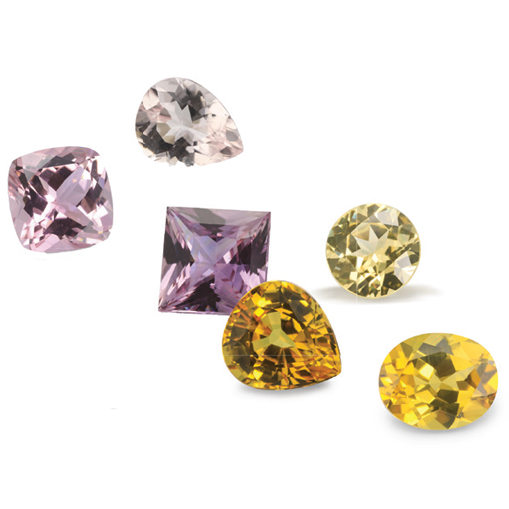 | 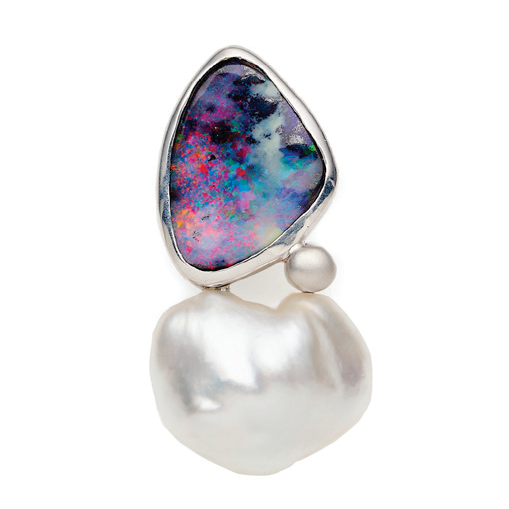 |  |
Above: O'Neils Affiliated | Above: Ikecho Australia | Above: Temelli Jewellery |
Choosing colour
Creatively, coloured gemstones offer great potential for manufacturing jewellers to show their skills; rainbow rings, gradient designs, clusters and pendants have all become fashionable in recent years. These gems also have a compelling emotional connection. “For many people, the process of purchasing a fi ne coloured gemstone is filled with a sense of discovery – one that is truly thrilling,” McCreesh explains.
Gemfields gemmologist Elena Basaglia agrees, saying, “No other gems quite channel the mystery and magic of centuries of kings, maharajas, pashas, queens and tsars in the same way as ‘the big three’.”
However, she hastens to add, “Perhaps the biggest misconception is that rubies, emeralds and sapphires have to be expensive gemstones. There are countless shades and colour variations, meaning there are myriad options for each of us. The trade traditionally values certain colours of ruby, sapphire, or emerald, yet the phrase ‘beauty is in the eye of the beholder’ is never more applicable than when selecting coloured gemstones.”
Coldham notes that “beauty, rarity and durability” are often attributed as the main purchasing drivers of coloured gemstones; however, he believes the consumer’s “perception of the story behind the stone and what it means to them personally” is far more important.
“Some will choose a garnet because it is their birthstone, some an amethyst because it reminds them of a favourite grandma, some wanted to possess a large, heart-shaped blue stone after seeing the movie Titanic,” Coldham explains. “The wonderful thing about coloured gems is each usually symbolises something important to the wearer.”
For Samantha Kelly of Adelaide’s Samantha Kelly Jewellery there’s another unique quality. “Besides the price diff erence, individuality seems to be key; people want something that no-one else has,” she says.
This makes coloured gemstones particularly appealing for Millennial and Gen Z shoppers, known to covet unique jewellery. Lilo Stadler, of opal supplier Bolda, notes that Queensland boulder opal plays directly to that desire.
“There is a trend toward larger stones that make a statement – boulder opals admirably fi t that bill and do not carry exorbitant price tags. The statement made by wearing a big opal is one of character, not a demonstration of worth. Boulder opals are for trendsetters, not followers,” she says.
With Millennials now aged between 23 and 38, they make up the largest segment of current and future engagement-ring customers. Notably, coloured gemstones are popular in this category. “Not every engagement ring stone must be a diamond,” McCreesh says. “Having a coloured gemstone alternative at hand is very important.”
At Melbourne’s Temelli Jewellery, aquamarine, morganite and tanzanite have had “significant increases in popularity”, according to marketing manager James Temelli.
“We’ve been commissioned to create a lot of custom rings and engagement rings using these gemstones. As of late, we have also noticed clients interested in emerald-cut coloured gemstones, whether it be ruby, aquamarine or sapphire.”
Temelli adds that coloured gemstones increase a jewellers’ ability to cater to different clientele, who aren’t interested in a diamond ring.
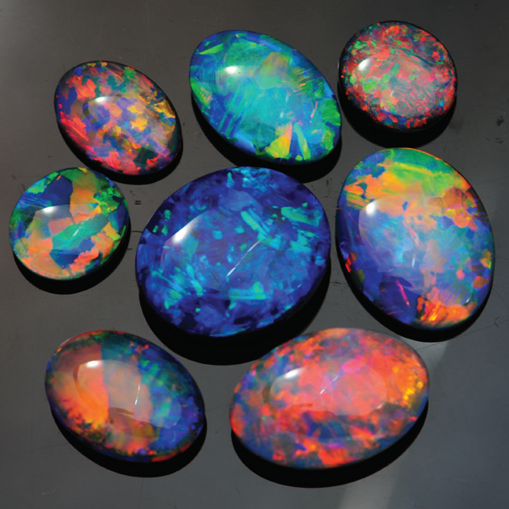 | 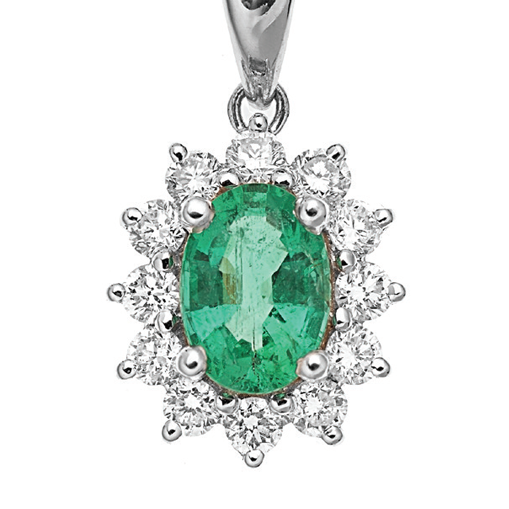 |  |
Above: A collection of fine black opals
courtesy Cody Opal | Above: Temelli Jewellery | Above: Blue Turtles |
Sustainable sourcing
The movement toward ethical consumption has been gaining traction across all retail sectors, and many in the jewellery industry are already taking steps toward responsible practices. “More of today’s jewellery consumers are asking whether the gemstone and precious metal they are buying has been ethically sourced,” Cody explains. “The ICA has been working very closely with CIBJO, AGTA [American Gem Trade Association] and the OECD over a number of years to better understand the supply chains for the various coloured gems.”
Many developing nations mine coloured gemstones, including Zambia, Mozambique, Myanmar, Colombia and Madagascar. Other gemstone-producing areas have experienced unrest in recent times, as in Sri Lanka, Mexico and Brazil.
Cody says the “vast majority” of coloured gemstones are supplied by artisanal and small enterprises, and the ICA is committed to developing procedures to help them become more responsible and sustainable. The organisation has endorsed the new CIBJO Responsible Sourcing Guidelines and “is encouraging all players in the supply chain to be more aware of the potential issues” he says, adding, “ICA members already agree to adhere to a strict code of ethics.”
At O’Neils Affiliated, responsible sourcing is taken seriously. “For us as a company, whilst price is important, it does not outweigh our priority to source gemstones as ethically as possible,” McCreesh says. “I personally endeavour to do business with people we know to have high professional and ethical standards.”
He adds that O’Neils Affiliated has been able to build strong links in its 70-year history with reputable miners and cutters to ensure high standards are met.
At Gemfields’ mines in Mozambique and Zambia, responsible practices encompass environmental management, safety and community engagement. “We typically invest more than $US1 million each year into local education, agriculture, health and conservation projects,” Jack Cunningham, sustainability, policy and risk director, Gemfields, says, adding that the company also sells gemstones via its own auction platform to ensure transparency.
Meanwhile, Lawson acknowledges the complexity of responsible sourcing, telling Jeweller that “there is no simple way to source an ethical gemstone”. He points to the difficulty of exporting gems legally out of developing nations and forming sustainable business relationships in unstable countries.
“The term is now a buzz phrase often used by unethical gem and jewellery traders to sell goods – how do you trust those claims?” he asks, adding that one advantage of opal and sapphire is that they can be sourced locally in Australia.
Stadler confirms that buyers of boulder opal frequently express the desire for ethically-mined and produced gemstones. Indeed, Ikecho’s Miller sources boulder opal from her own father’s mines in Lightning Ridge and Queensland. “He has the largest range of opals in Australia so I have a lot of variety to choose from,” she explains.
On an international level, Palos points out that there is no equivalent to the diamond industry’s Kimberley Process in the coloured gemstone market. As a result, the responsibility falls to suppliers. “I firmly believe most wholesalers in Australia, or indeed around the world, do their utmost to guarantee their product is ethically sourced,” he says.
Ensuring complete trust and transparency with suppliers is key for Kelly. “It can be difficult, but I have built up relationships with my suppliers so I trust they will disclose further information if required. It’s extremely rare that I will purchase any gemstones from new suppliers,” she explains.
Temelli Jewellery takes a similar approach. “We align with gemstone suppliers who have the same ethical sourcing procedure as we do,” Temelli says. “As well as lab-certified coloured gems, we also assess the origin and, if possible, the mine of origin when sourcing specific gems so that we can understand how the gemstones are mined, cut and polished.”
As with many aspects of the jewellery industry, trust is crucial when it comes to coloured gemstones. Equally critical are creative flair, an ability to capitalise on the emotional connection to colour and an understanding of consumers who desire a true point of difference.
 | 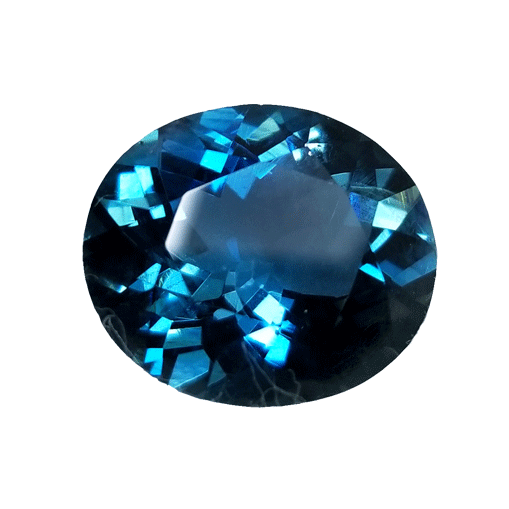 |  |
Above: Blue Turtles | Above: Lawson Gems | Above: Adrian Crosbie handmade jewellery
courtesy Lawson Gem |
Battling Misconceptions
As the coloured gemstone category has matured, jewellers have increased theirknowledge of coloured gemstones. However, with the rise of the internet, consumers are also more informed – and misinformed – than ever, meaning continuing education for retail jewellers is crucial.
“Our experienced team of gemmologists at O’Neils Affiliated is always here to assist with the more complex queries; however, experienced sales staff with a gemmological understanding within a retail environment are also essential to assist the discerning customer,” director Brendan McCreesh advises.
When it comes to the public, he points to two key areas of confusion: scarcity and hardness.
“The concept of rarity is often misunderstood, largely due to the term being so subjective. Are diamonds rare? It depends on your point of view,” he explains. “In comparison, it would be fair to say that rubies are certainly far rarer – ruby mines are dwindling due to material depletion; many have shut down in the past 20 years yet many new diamond deposits have been discovered.”
Additionally, McCreesh says it’s important to understand that hardness and durability are not the same. “A misconception regarding hardness and durability has caused many a retail sale for fall through,” he says.
”There is a vast world of jaw-droppingly beautiful gemstones out there that people unnecessarily dismiss due to some misguided and unfounded concept of hardness. There are many jewellery purchases where there is no need for hardness to be front-of-mind.”
Indeed, Charles Lawson, director of Lawson Gems in Brisbane, has also faced the challenge of correcting misconceptions about hardness.
“Some stones get a bad rap for being soft or brittle, for example, apatite, kyanite, zircon and opal,” he says. “When compared to corundum or diamond they are exponentially softer; however, when compared to pearl – one of the most popular gems – they are exponentially harder, yet they are overlooked.”
Another misperception is that all treatments are undesirable. “Heat-treating has been around for the last 500 years or so and is a completely stable treatment when done properly,” Lawson explains. “The problem occurs when disclosure is not given.”
Finally, the misguided idea that coloured gemstones represent an investment opportunity similar to natural fancy-colour diamonds continues to persist.
“It would be akin to investing in art with no idea of what you are doing,” Lawson says. He recommends studying with gemmological associations in Australia (GAA), the UK (Gem-A) or the USA (GIA).
GAA patron Terry Coldham also advises retailers to consider undertaking a gemmology course: “A course of study will provide retailers with the background information on a very wide variety of gemstones: where they come from, their properties and most importantly their stories. In the customer’s eyes, you are not then just a sales assistant but an expert advisor.”
Meanwhile, Damien Cody, co-director of Cody Opal and vice-president of the International Coloured Gemstone Association (ICA) emphasises the role of the ICA in promoting the coloured-gemstone industry through awareness and education. Its biannual Congress is scheduled to take place this month in Bangkok, Thailand.
The event, which runs from 12–15 October, is themed ‘Ruby: Eternal Love’ and will include presentations from “a broad spectrum of industry experts from around the globe, covering topics including mining, cutting, marketing, distribution, ethics, design and gemmology. There will be a strong focus on artisanal mining,” Cody reveals.
Closer to home, the new Australian Opal Centre (AOC) project at Lightning Ridge is already taking shape, having secured $17 million in state and federal funding earlier this year.
“The AOC is the most important development the Australian gemstone industry has ever undertaken,” says Coldham, who is a foundation member of the centre.
“The AOC will certainly create more interest in opal with local consumers and signifi cantly increase visitor numbers to the opal fi elds. More importantly the AOC will become a symbol for the Australian opal industry and a tool for promotion of our opals internationally.”
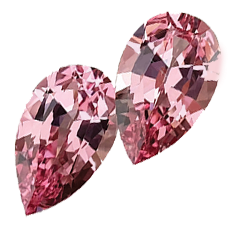 |  | 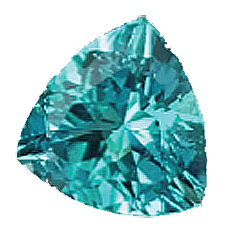 |
Above: Facets Australia | Above: Cody Opal | Above: Facets Australia |
THE HOT LIST |
The ten most in-demand coloured gemstones of the last 12 months, according to jewellers and suppliers. |
| |
| | 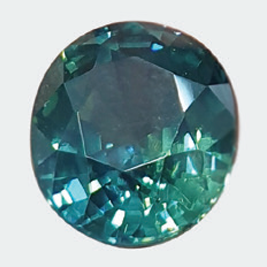 | SAPPHIRE
Teal tops the list, alongside particolour and blue sapphire, closely followed by pink and, significantly, yellow | | 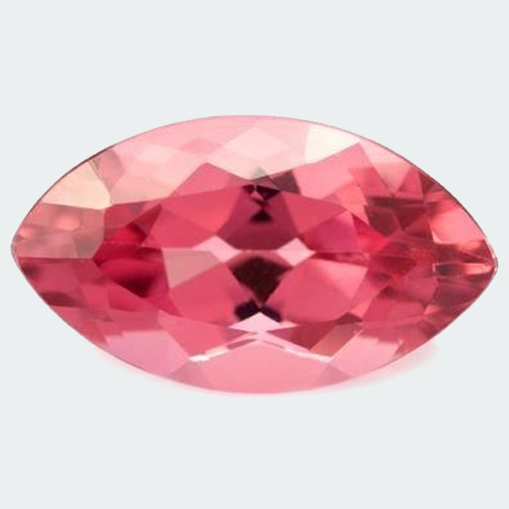 | TOURMALINE
All colours of this versatile gem are popular, but particularly in demand are soft and pretty pink and blue-green ‘teal’ shades | |
| | | | | | | |
| |  | MORGANITE
The pink trend continues, with consumers embracing peach pink morganite | | 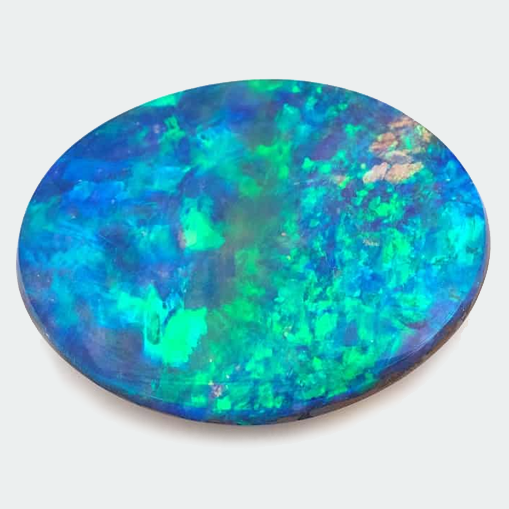 | OPAL
Demand for Australian opal and boulder opal remains strong | |
| | | | | | | |
| | 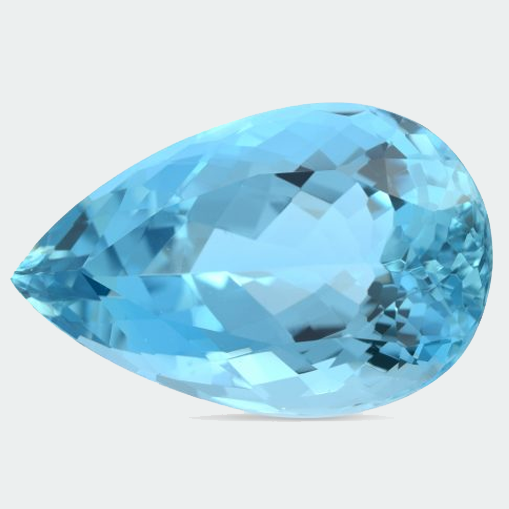 | AQUAMARINE
The watery blue of aquamarine has captured hearts. Indeed, ocean hues across all gemstones are enchanting consumers | | 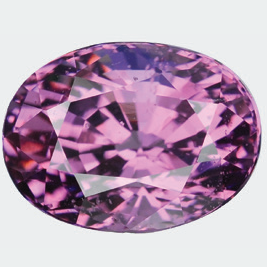 | SPINEL
Grey, grey-blue and lavender purple have been noted as popular spinel colours | |
| | | | | | | |
| |  | GARNET
Tsavorite and demantoid garnet have been winning over consumers with their vibrant green hues | | 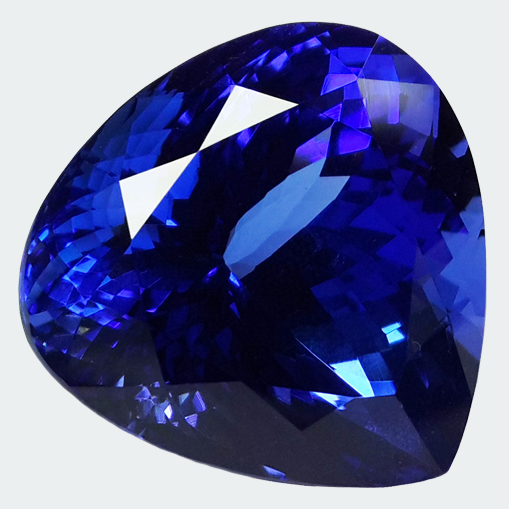 | TANZANITE
The deep, vibrant blue shade of tanzanite is becoming more popular for engagement rings | |
| | | | | | | |
| | 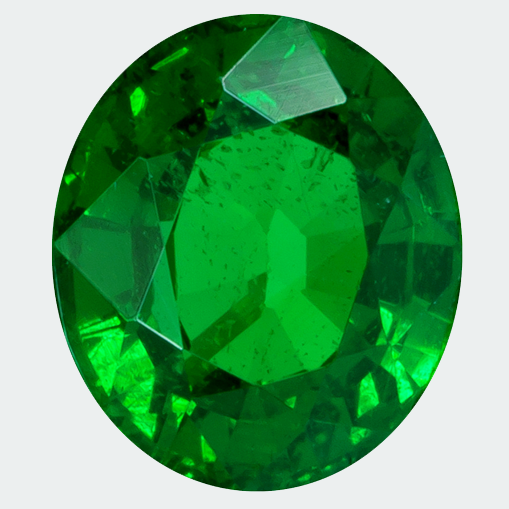 | EMERALD
An enduring classic, consumers still love the deep green of emerald | |  | RUBY
The final gem of the ‘big three’, ruby rounds out the top 10 list. | |
| | | | | | | |
READ emAG